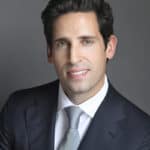There are a wide variety of non-surgical treatment options available for people who have a herniated disc. The first course of action should be to stop doing any activities that are causing pain and to try to gently stretch your arms and legs. Over-the-counter ibuprofen will assist with decreasing swelling. If the injury occurred in the lower back, ice should help with inflammation. If pain persists for more than two to four weeks, seeking help from a medical professional is recommended.
Herniated Disc Treatment: Seeking Help
One of the first health professionals you should visit is a chiropractor, who will perform a complete physical exam and analyze your medical history. They may also require orthopedic and neurological tests. Contrary to popular belief, chiropractors cannot simply “pop a disc back in place” through various, vigorous manipulations. Chiropractors will perform various tests to develop a treatment plan that is effective for your particular level of pain and overall health.
The most common treatments include spinal manipulation, manual therapy, and therapeutic exercises. Non-Surgical Spinal Decompression is an effective, non-invasive treatment that has been medically proven to ease the severe back pain caused by herniated discs. This treatment involves the use of a specialized table that assists in gently stretching the spine. These treatments typically take 45 minutes. This is a painless therapy that guides the disc away from the exposed nerve, decreasing inflammation and pain. Generally, this is combined with a physical therapy program.
Depending on your condition, your chiropractor may also recommend Cold Laser Therapy, which is another harmless and non-intrusive treatment that utilizes low-intensity levels of laser light to ease inflammation and pain associated with nerve or spinal injuries. A cold laser is not actually “cold.” This treatment derived its name due to the fact that it does not facilitate a temperature change in the body’s stimulated tissues. The laser permeates the skin and repairs irregular cellular function.
Physical therapy, in conjunction with chiropractic care, has proven to be quite effective in immediately reducing the pain and discomfort associated with herniated discs. Patients are also educated on good body mechanics (such as proper lifting techniques), which will help prevent further injuries. Lumbar stabilization exercises will help you to develop stronger, well-balanced muscles which reduces the stress on your discs and vertebrae. There are numerous options when considering physical therapy. Your physical therapist will work with you to construct a plan that caters to your individual needs.
Another form of treatment for herniated discs is acupuncture. Acupuncture has been proven to decrease perception of pain, because it triggers the release of endorphins into the blood stream. There is also the Gate Control Theory, which claims that pain signals gradually move from the injured area to the spinal cord and then to the brain. Nerves are only capable of handling a small amount of signals simultaneously. Acupuncture can help to produce faster signals which eliminates the slower pain signals. This helps to intercept painful sensations.
Contact us for more information or to schedule an appointment with a herniated disc specialist.

